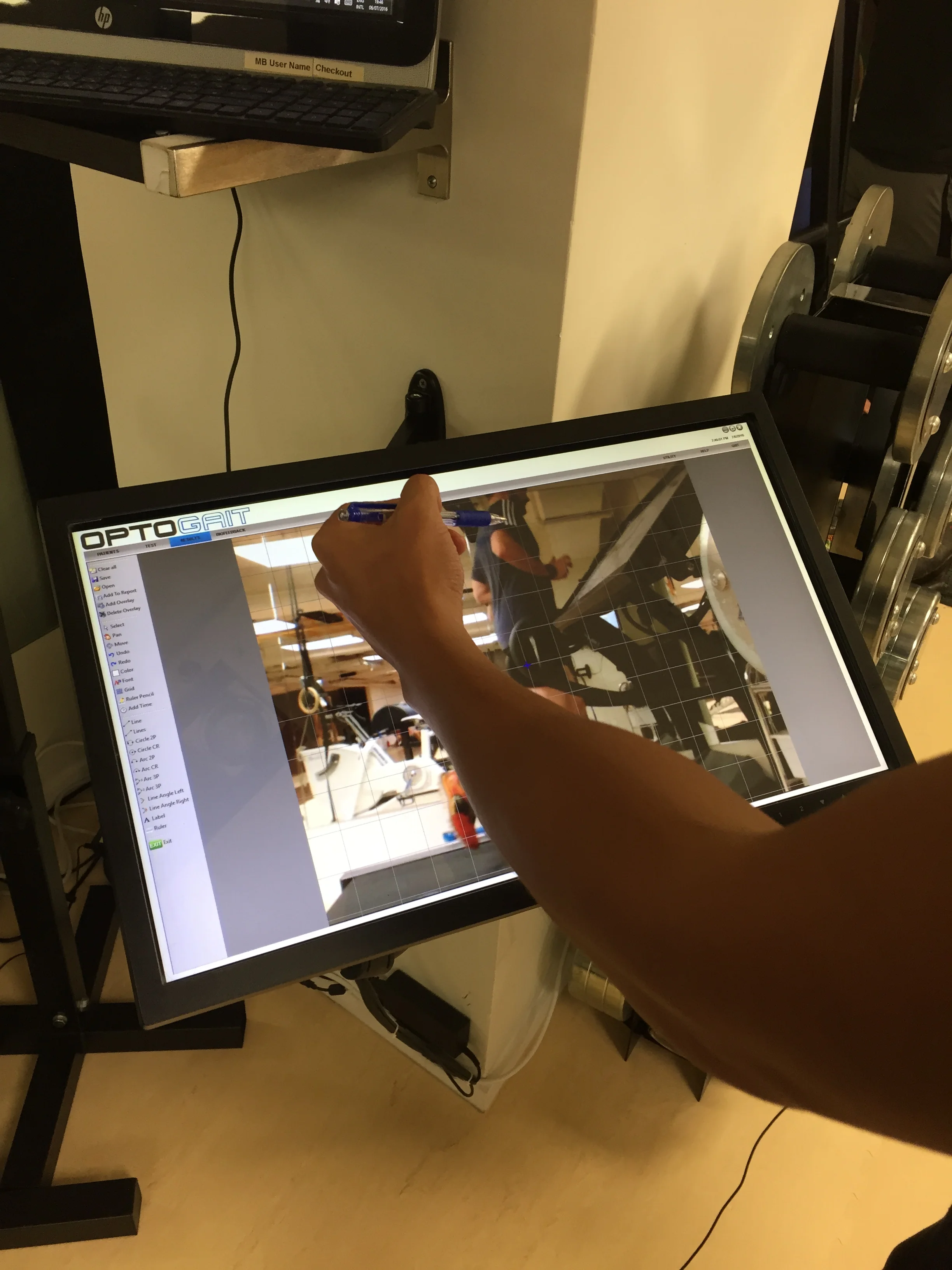Man vs Sea Elephant - Unlocking the Secret of my Slowness Part III
The quest to understand the roots of my appalling running performance is an ongoing topic of this blog. In two previous Life-Sparring rounds I looked at possible reasons like age and weight and my running form. In this article I dive deeper, literally going more than just skin-deep.
If you are a regular reader of Life-Sparring, you will have realized that I am a nut for Quantified Self data. Numbers, if established in a sound way, have an honesty about them that cannot be denied. I have measured weight, body fat and activity data for quite some time, and have used a heart rate monitor watch during all sports activities since 2008. I even have handwritten running records dating back to 1992, when I was not even 14.
Something that I always wanted to do, was a true athletic assessment at a sports performance lab. The opportunity recently opened, when Boris, a friend of mine and an avid marathon runner (Marathon PR 2:58:54) made an appointment at the Institute of Human Performance at The University of Hong Kong. He tagged me along, and for HK$ 1,600 per person, we did a running V02max & Lactate Threshold test and a DXA body composition scan. We did the test in the second week of March, one and a half weeks into my experiment with the ketogenic diet, hence I added a non-fasted cholesterol test, to see how the first week in ketosis and living on huge amounts of fat impacted my blood lipids.
Meet the Human Sea Elephant – Humbled by the DXA Scan
Doing a DXA (DEXA) body fat scan is a pretty humbling experience. First there is the process itself: you lay down completely motionless for five minutes, on a medical table, with your feet in bondage. Obviously, your nose immediately starts itching and you are trying not to think about the low-density x-rays shooting through your body.
And then comes the moment of seeing yourself as a heat map of fat, muscles and bones. It is not, that I was previously unaware of my unfavorable body composition, but looking at myself essentially disassembled into my building blocks was still eye opening, and not particular pretty.
My total body fat calculated through the DXA scan came out as a whopping 32%, significantly higher than the measurements taken at home, where my Omron Karada Scan body fat scale put me at around 25% body fat. It is normal that Bioelectrical Impedance Analysis (BIA) underestimates total body fat, but by 6 kg of pure fat? II'd make a really nice pot roast.
This result puts me roughly in the same category as an Elephant Seal and means that I would have to get rid of two-thirds of my blubber, if I ever would want to show my well-hidden abs.
Sponsored:
If you want to find out if you are more of a gazelle than a seal or in general take a closer look at your building blocks, a good start would be heading over to DEXAScan.com. DX has an extensive directory of DEXA scan locations and very detailed background info.
Less of a surprise than the overall share of body fat is the location of my adipose tissue. The yellow-orange outline of my trunk is where you would expect it to be. At the most it was a little bit astonishing that my arms and especially my legs carry visible fat deposits too.
Another rather odd finding of the scan is the weight difference between my right and my left leg. I would not have guessed that there is a gap of two kg between my heavier right and my lighter left leg. This phenomenon seems to be not completely unusual, and the number should not be over interpreted. However, it makes me think if this imbalance is related to the differences in stride length shown in my gait analysis. It is an observation I would like to follow-up upon, also in connection with my lack of hip and hamstring mobility that impede my efforts to deliver anything close to a high kick in Muay Thai.
Fat Lowers Cholesterol
As old folk wisdom has it, a diet primarily consisting of fats and eggs should lead to terribly high cholesterol. Being a bit more than a week into a ketogenic diet, I was therefore curious to see how my cholesterol was looking. As I did the tests in the late afternoon, I only could do a non-fasted cholesterol test.
Despite consuming huge amounts of olive oil, my HDL of 0.907 mmol/L, came out even lower than in previous measurements taken. Total cholesterol at 4.4 mmol/L, was slightly below the average of measurements from past health checks.
As expected, me living on meat butter, oils, nuts, cheese and fish did not lead to higher blood lipid counts. It is time to take this myth out of nutritional guidelines. The lower HDL values are however counterintuitive and should be monitored. I will try to schedule another test not too far out.
Running my Lungs Out – VO2 max and Lactate Threshold Test
VO2max and Lactate Threshold are two standard tests in the sports performance analysis and two of the most accepted indicators for (aerobic) physical fitness. Typically, they are done at the same time, while running (or cycling) three-minute intervals of increasing speed and difficulty on a treadmill (or stationary bike).
You run on a treadmill, with a tight and uncomfortable face mask measuring what you breath in and out. Every three minutes you jump from the belt and put your legs left and right on a steady footing to get your finger pricked for blood and to grade your level of exertion on a scale from 1 (nothing) to 20 (all-out), before jumping back on an even faster running treadmill.
As the technically bad runner that I am, my biggest fear was falling from the treadmill or passing out straight. The whole set-up is a bit intimidating and knowing that you will push yourself to your absolute limit, does not make it easier. Luckily, I managed to avoid both, fainting and falling and did not even vomit into my mask, despite getting fairly close towards the end of the test.
The VO2 max test measures the oxygen consumption over the course of the exercise, establishing the maximum aerobic capacity, or the maximum amount of oxygen your body can take in. It does so by analyzing the breathing volume and the composition of your breath while conducting the running test.
The lactate threshold test is a blood test, with samples taken before the start of the exercise and at every of the 30-second intermissions between the exercise levels.
While the VO2 max test is an indicator of your cardiovascular fitness, in terms of the maximum power output you get bring onto the road, the lactate threshold shows at what speed/heart rate the concentration of lactate in your blood is increasing rapidly, leading to an inability of your muscles to contract (technically the boogeyman is not the lactate itself but hydrogen ions, but as lactate is what is measured, the simplified explanation should be sufficient). The higher the lactate threshold is, the faster a runner can run without fatiguing.
Doing the test straight after Boris, made the experience even more humbling. He was barely sweating at the very same speed levels that would bring my heart rate to the 200-bpm mark and close to passing out. But that’s why Boris qualified for the Boston Marathon and I celebrate a 10k below the one hour mark. Or as our Glen, exercise physiologist and our test administrator put it: “Boris and I have two very different machines”.
Mediocrity in Numbers
If the V02Max scale had the classification mediocre, that would be me. With 3.3L/min or 37.1ml/kg/min I am at the upper end of “fair”, slightly below “moderate”. As running V02Max is measured in relation to the body weight, at least I have one simple way to improve the number, by simply losing weight.
One data point that stood out for me was that my ventilation stayed significantly below 100 L/min, even at a maximum heart rate of 200. This is another indicator that lung capacity and breathing in general is another limiting factor for my running performance. This topic I would like to explore in a different Life-Sparring round soon. Maybe there is a way to improve my respiratory capacity by some form of inspiratory training.
The lactate test showed that I reached my aerobic threshold at a speed of 10 km/h and a heart rate of 175 bpm and the lactate threshold at 12 km/h at 186 beats per minute. This is not just an interesting number but has real applications for my hikes and long runs. By pacing properly, and keeping my heart rate as long as possible below 175, I can avoid accumulation of lactate in the muscles and delay fatiguing. At the same time, I can use this data to train my lactate tolerance and increase the threshold. How to improve your lactate threshold is a complicated topic by itself. While a lot of coaches swear by training at the threshold to improve the capacities to clear lactate, others point out that it is the slow twitch muscles who clear lactate produced by fast twitch muscle fibers, so the right training is to train in the aerobic zone.
I guess I will have to do some more research and commit to a training plan. While I ran almost all my life, I never really trained running systematically.
Mediocrity Confirmed – And now What?
Doing the assessments was an interesting, while humbling experience. There have been a lot of insights that I want to explore further.
The shocking high body fat percentage from the DXA scan re-enforced my will to lose body fat, no matter what it will take me. Since I started my serious attempt on a ketogenic diet and low-carb lifestyle on March 1, I am down about 5kg of weight and about 2% body fat (according to my body fat scale). For wellbeing, health and performance I want to continue this transformation and reach a body fat below 20%.
The muscular imbalance between my legs is another topic I would like to explore further. I am sure there are some issues that can be improved by physiotherapy or a targeted workout.
Breathing and inspiratory training are also on my shortlist. Understanding how breathing works and if there are some parameters that can be improved is a very exciting venture. Stay tuned for an update.
And finally, getting my VO2Max and my lactate threshold measured stimulated my competitive ambitions. I wonder how many percents of performance I could squeeze out with a real training plan instead of just running.










